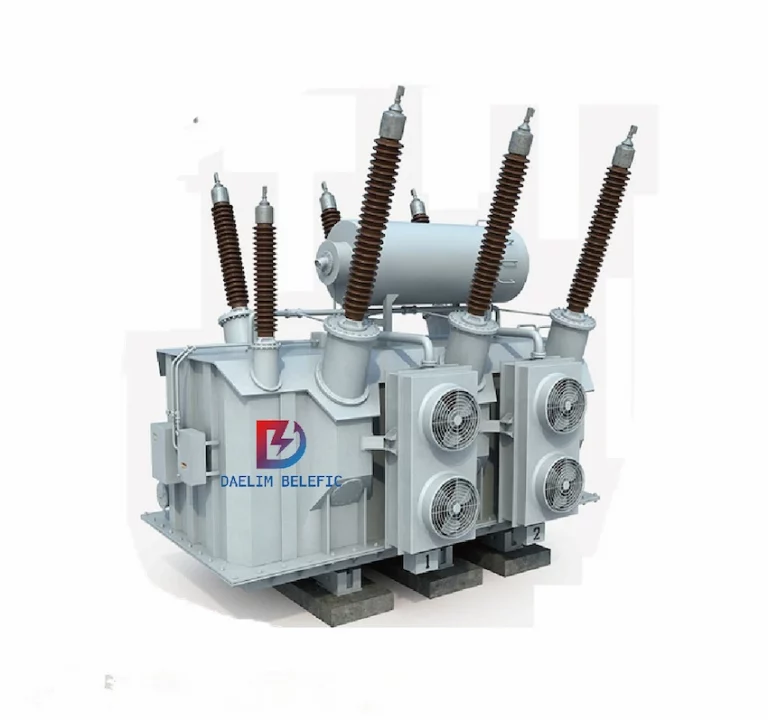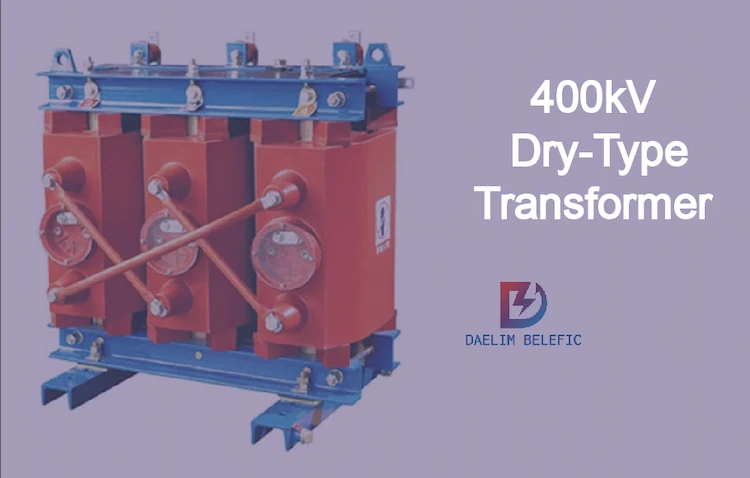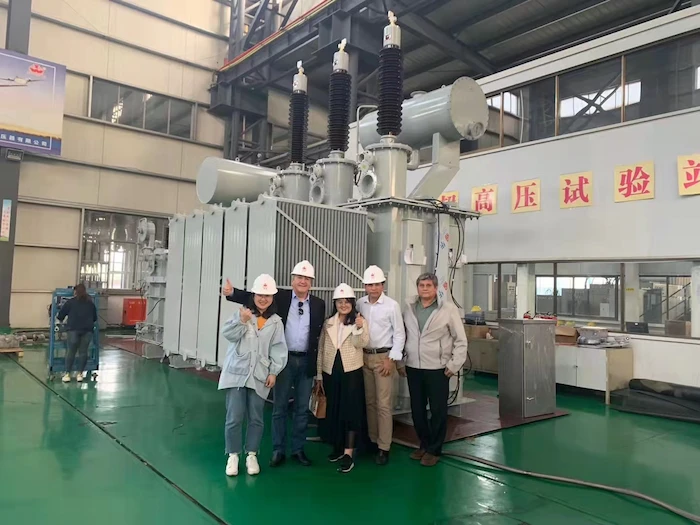ELECTRIC, WITH AN EDGE

Transformers are electrical devices that use electromagnetic induction to transmit electricity from one circuit to another. One of its many types is the 400kV transformer that is available in the market.
The 400kV transformer is widely used as a power transmitter and receiving device.
DAELIM provides these types of transformers. For 15 years in the industry, the company offered clients a variety of transformers to choose from.
DAELIM’s products are used in the power system and other industries that are involved in the process.
If you’re looking for a supplier that can provide you with high-quality products and dependable service, DAELIM is the brand to go with.
14+FAQ ABOUT THE POWER TRANSFORMER IN SUBSTATION
-power transformers in substations play a vital role in distributing electricity to their consumers, especially other transformer substation types. This article will provide you full details about this topic.
8+FAQ ABOUT THE CUSTOM POWER TRANSFORMERS
-Discover how transformers work, how to choose the right one for your project, and why custom power transformers are ideal. Read on!
8+FAQ ABOUT THE CUSTOM POWER TRANSFORMERS
-Discover how transformers work, how to choose the right one for your project, and why custom power transformers are ideal. Read on!
Cooling method of 500kV transformer
-The operation of the 500kV transformer requires temperature control, it is necessary to choose a suitable cooling method to help it cool down.
A 400kV transformer is used in higher-voltage transmission networks for step-up and step-down applications.
Plus, it operates on a full load rating with minimal load variations.
This transformer design considers maximum efficiency (100%), calculated using the power output/input ratio.
Moreover, a 400kV substation’s primary function would be to convert different voltage levels so that power systems could be linked together to form a power system grid.
The 400 kV transformer specifications are intended to alter the connection between the approaching voltage and current and the active voltage and current.

A 400kV transformer has several different types of specifications, all of which are used to power high voltage electric lines.
The transformer’s primary function is to change an alternating current (AC) electrical signal into a direct current (DC) electrical signal.
Since this is a power transformer, it typically transmits high voltage electrical power.
It is important to note that various 400 kV transformer specifications can exist from different manufacturers or brands.
A 400kV transformer has a three-phase design to increase or decrease voltage levels.
The electricity generated at various producing stations is three-phase and operates at voltages of 13.2KV or 22KV.
Power is delivered at higher voltages to minimize power loss at the distribution end, such as 400kV.
As a result, a three-phase step-up transformer raises the voltage for transmission at higher voltages.
It is possible to build a three-phase bank utilizing a single three-phase transformer with six windings on a common multi-legged core.
Also, compared to three units of the same rating, this single unit reduces weight and cost while also reducing windings, the quantity of iron in the core, and insulating materials used in the core.
If one of the three phases fails, it must take the entire unit out of service.
This factor is the only drawback to using a single three-phase transformer.
One of the advantages of a three-phase transformer is that it may supply the same KVA as a bank of three-phase transformers with significantly less core material.
Additionally, it is lighter and smaller, requiring less space for installation.
Despite its small size, it is still high-efficiency.
It is cost-effective when compared to three single-phase transformers.
Additionally, transportation is convenient and inexpensive.
In the case of a three-phase transformer, just three terminals must be taken out, compared to six in the case of three single-phase transformers.
Toroidal core structure describes the 400kV transformer due to its torus or donut-shaped core.
Its primary and secondary windings were separated by an insulating layer and wound around the whole surface of the torus core.
Moreover, magnetic flux leakage is minimized in this design.
Plus, a toroidal transformer core is regarded as the optimum transformer core design.
Having a Toroidal core structure equates to several advantages over typical square and rectangular transformers for sensitive and important electrical circuits.
Some of these characteristics are great efficiency, low noise, low heat generation, and small size.
Power supply systems, control equipment, audio systems, power inverters, and other electronic devices commonly use them.
They can also be found in other machines.
A 400kV transformer is a handy device that converts high voltage electricity directly from a power plant to a lower voltage.
It permits machinery and appliances that can only handle low voltage to be operated safely and efficiently in places like offices and industries.
Additionally, a 400kV transformer generates much heat during this process, which must be dispersed to remain running safely.

The cooling medium in this method is air.
Take note; the 400kV Dry-Type transformers are created by impregnating polyester or silicone varnish using vacuum pressure.
Several of them are also constructed with VPI epoxy and cast resin to withstand harsh climatic conditions.
For large transformers like a 400kV Oil-Immersed transformer, oil-immersed cooling is more efficient.
As the name implies, the coils are immersed in oil (most commonly mineral oil), which aids in regulating the transformer’s temperature.
This oil is dissipated by radiators attached to the transformer’s tank.
The radiators are equipped with fans to further improve the cooling of the transformer, which aid in lowering the temperature.
A 400 kV transformer price has a range from $780,000 up to $1,900,000 online.
However, it is important to note that its price may vary depending on the market and brand.
So, don’t get overwhelmed when you check the price of a 400kV transformer.
After all, it is worthy of your investment.
How Do I Choose a Main Power Transformer? The Most Complete Guide
The physical specifications of a 400kV transformer have a 1,400 to 1,550 mm height, 1,450 mm to 1,500 mm length, and 850 mm width.
Meanwhile, a 400kV transformer weight ranges from 1,550 to 1,700 kg in total.
Furthermore, it uses 380 to 450 liters of oil.
However, you need to remember one thing the same with the pricing of this transformer.
You have to expect that the specifications of this transformer vary depending on the market and brand.
The HV in a transformer means High-Voltage, and this type has a significant function.
Converting voltages from one level or phase to another is done by high voltage transformers.
They can have features for electrical isolation, power distribution, and control and instrumentation applications, among other things.
The idea of magnetic induction between coils is used to convert voltage and current levels in this type of transformer construction.
KV means Kilo Volt. In electrical engineering, the KiloVolt is the standard unit of Voltage measurement.
High Power Transmission Lines employ this equipment.
As it turns out, you’ve seen about everything there is to fear from HPT Lines (11 KVA).
On the other hand, kVA stands for KiloVolt Ampere, the metric for apparent power.
An equipment’s rated power is its visible power, and all transformers are rated in KVA.
As a result of the power factor, there is no loss (min. loss). Copper and humming losses account for the bulk of the losses.
LV and HV windings are wound on separate limbs of the transformer to make it easier to explain how the transformer works in terms of voltage.
Each limb of the core will have both LV, and HV winding wound simultaneously, in practice, nevertheless.
Insulation between the LV winding and core of the transformer is much less than between the HV winding and core, resulting in a smaller transformer for the same MVA rating.
Because of this, the LV winding is located close to the transformer’s core.
Furthermore, insulation is placed on the core of the transformer, and a low-voltage winding is wound.
Again, the LV and HV windings are separated by an insulating layer.
More and more people are working with electrical devices, and we need transformers to keep the electricity flowing.
The transformer is a critical part of an electrical system.
Transformers are used in the electrical system to shift voltages.
The 400kV transformer is one of the various power transformers on the market that you may use for this purpose.
This transformer is commonly used to transmit and receive power.
Finding an electrical transformer that is suited for your requirements can be a difficult undertaking.
However, you may be confident that the information provided above will assist you in your search for what you require from Daelim.

If you find that the existing 400kV transformer types or power cannot meet your requirements. You can choose to tell Daelim. Daelim has a team that has always had a wealth of design transformers, and can give you a specific design plan in the shortest time.
Daelim’s distribution transformers comply with IEEE, ANSI, CSA, IEC certification, and are used in North America (such as Canada, the United States, Mexico), South America (such as Ecuador, Chile), Europe (such as Spain, Lithuania) and some Asian countries. Daelim even has a professional installation team that can provide you with installation services.
ELECTRIC, WITH AN ENGE-- DAELIM BELEFIC
After filling in the contact information, you can download the PDF.